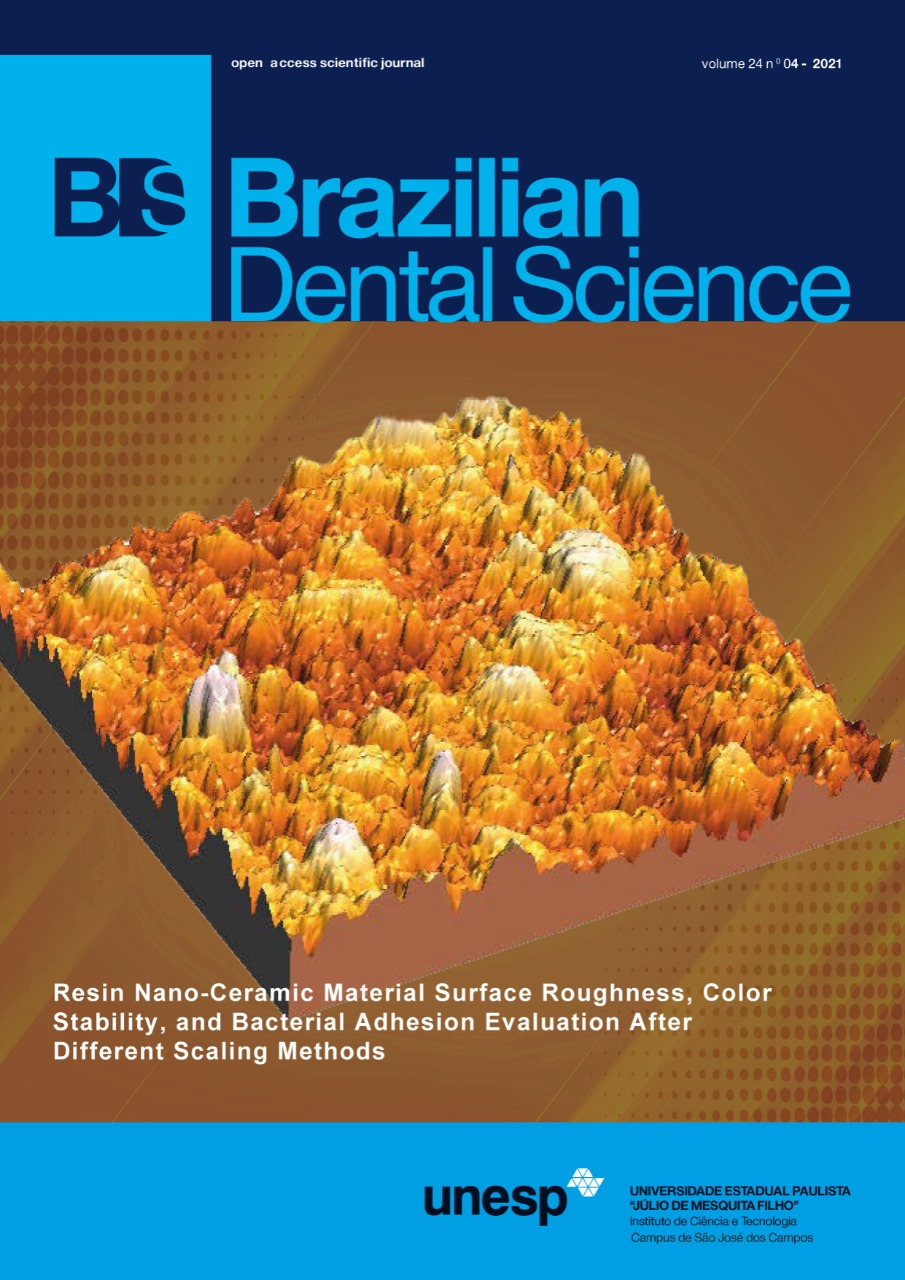Prevalence and Configuration of C-shaped Canals in Lower Molars from a Chilean Subpopulation
DOI:
https://doi.org/10.14295/bds.2021.v24i4.2701Abstract
Objective: To determine the prevalence of C-shaped canals in lower molars (first and second molars) in a Chilean subpopulation, and to identify root configuration and demographic characteristics using cone beam tomography. Materials and method: 912 molars (456 first and 456 second molars) resulting from the analysis of 228 mandibular CBCT scans (89 men and 139 women between 15 and 80 years old) were evaluated. Through panoramic reconstruction and axial tomographic sections, the root configuration was established, and the presence and type of C-shaped canal were classified, analyzing 5 levels along the root canal. Data were statistically analyzed with a 5% significance level. Results: Of the 912 molars analyzed, 69 were classified as C-shaped (7.57%), constituting 65.72% of those molars that presented fused roots. 100% of this configuration of canals was observed in lower second molars, presenting a higher prevalence in women (n = 49, 71.01%). 40.82% of the cases that presented a C-shaped configuration manifested bilaterally. The most frequent C-shaped canal configuration was C3 (n = 347, 66.10%), according to Melton's classification. Conclusion: The C-shaped canals in the studied population were observed entirely in lower second molars, showing a clear predilection for the female sex and a high rate of bilaterality.
Keywords
Anatomy; Cone beam computed tomography; Dental pulp cavity; Endodontics.
Downloads
Downloads
Published
How to Cite
Issue
Section
License
Brazilian Dental Science uses the Creative Commons (CC-BY 4.0) license, thus preserving the integrity of articles in an open access environment. The journal allows the author to retain publishing rights without restrictions.
=================




























